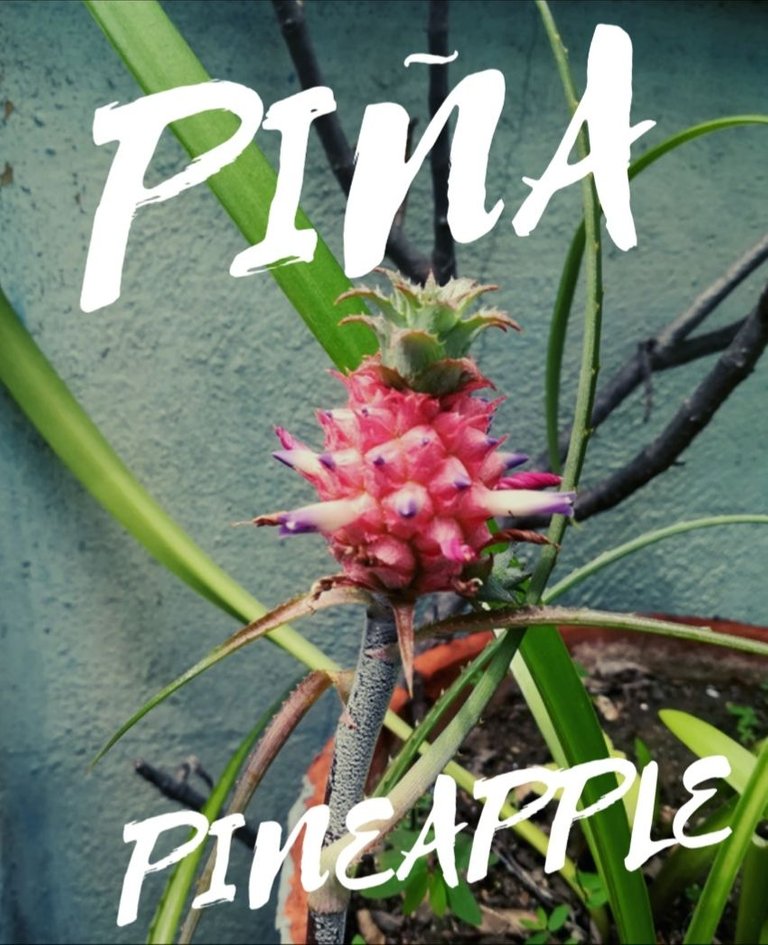
photo by me.
Who does not like pineapple? I am sure very few people, it is a delicious fruit of the pineapple plant of the genus pineapple sativa of the Bromeliad family, native to Brazil, Guyana, upper Orinoco and throughout the Caribbean. Now let's talk a little about Bromeliads, they live in close proximity to orchids, some of them on branches or tree forks but the ones we are interested in are the terrestrial ones and plants of this family are not difficult to cultivate, that is, bromeliads are very cultivated plants, either as ornamental or as fruits.
The pineapple in general terms requires frequent exposure to the sun, its size is of 90 cm of height generally for as many of width, it has narrow leaves of thorny edges
and its center turns pinkish in the flowering season.
Its ideal soil for cultivation is a mixture of heather and peat, we can not drown it with its hydration, the humidity should be normal and in droughts it is good to increase a little watering. It is a plant resistant to pests and its multiplication is done by dividing the plant by separating the children that appear on its branches, it is an extraordinary plant, in my house we have one and I can say that it is one of my favorites without a doubt.
🍍🌴

foto de mi autoría
¿A quién no les gusta la piña? estoy segura muy pocas personas, es una deliciosa fruta de la planta del género ananás sativa de la familia de las Bromelias, originaria de Brasil, Guayana, alto Orinoco y en todo el Caribe. Ahora bien hablemos un poco de las Bromelias, ellas viven en vecindad con las orquídeas, unas sobrepuestas en ramas o las horcaduras de los árboles pero la que nos interesa son las terrestres y las plantas de esta familia no son difíciles de cultivar, es decir las bromelias son plantas muy cultivadas, bien sea como ornamental o como frutas.
El ananás en términos generales requiere una exposición al sol frecuente, su tamaño son de 90 cm de altura generalmente por otros tantos de ancho, tiene hojas estrechas de bordes espinozos
y su centro se vuelve sonrosado en la época de floración.
Su terreno ideal para cultivar es una mezcla de tierra de brezo y turba, no la podemos ahogar con su hidratación, la humedad debe ser normal y en sequias es bueno aumentar un poco los riegos. Es una planta resistente a las plagas y su multiplicación se realiza por división de la planta al separar los hijos que aparecen en sus ramas, resulta una planta extraordinaria, en mi casa tenemos una y puedo decir que es de mis favoritas sin lugar a dudas.
🍍🌴
Congratulations @shar1988! You have completed the following achievement on the Hive blockchain and have been rewarded with new badge(s) :
Your next target is to reach 200 upvotes.
You can view your badges on your board and compare yourself to others in the Ranking
If you no longer want to receive notifications, reply to this comment with the word
STOPCheck out the last post from @hivebuzz:
Support the HiveBuzz project. Vote for our proposal!